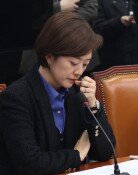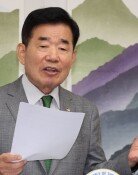[Opinion] Japans Aging Workforce
The buzz among Japanese workers nowadays is over Japans first generation of baby boomers (the Dankai generation) born right after the end of World War II (1947-49), and who reach retirement age next year.
Baby boomers account for five percent (6.8 million) of Japans population. Among them, over 70 percent are office workers who have dedicated their lives to working for a single company. Their retirement will lead to a lack of skilled workers and a decline in productivity, and people even worry that this will cause a sluggish real estate market due to empty office buildings and dwindling night entertainment facilities in business districts.
To put out the fire, Japans government has revised its employment stabilizing act for the elderly, lengthening the retirement age from 60 to 62 this year, and to 65 by 2013. Companies have the option to choose from either re-employing retirees, extending retirement ages, or getting rid of retirement ages altogether.
According to research by Japans Ministry of Health, Labor and Welfare, 94 percent of Japans companies prefer re-employing their retirees.
When retirees rejoin their companies, it will be not an unusual situation for the grey-haired grandpas to have bosses the age of their sons. Toyota decided to reemploy 60 percent (650 people) of its retirees next year. Their wages will be half as much as before. But it is a win-win proposition in that the reemployed can retain their work, and companies can utilize skilled workers at a low cost. The trend of thicker wallets for the elderly, thinner for the younger, will possibly be even more evident. While the average propensity to consume (consumption divided by disposable income) of 40 years and younger was 1.3-1.6 over the last five years, that of 65 years and older was a much higher 10. It indicates a bipolarization by generation.
Still, much more needs to be done to address the aging problem in Japan. By 2015, one out of every four people and by 2050, over 35 percent of the population will be 65 years or older. Keio University professor Atsushi Seike advocates the abolition of retirement ages, saying, reemployment of retirees is just a symptomatic treatment. By the way, how much progress has Korea made in preparing for its aging problem?
Lee Dong-kwan, Editorial Writer, dklee@donga.com
Headline News
- Medical school quotas expanded after 27 years by 1,509
- ‘Pension replacement rate of 44-45% is negotiable,’ says Lee Jae-myung
- 16 out of 20 food companies see cost ratio decrease in 1st quarter
- Oksana Chusovitina with 8 Olympics under her belt gets injured
- Real income effectively reduced amid inflation hikes







